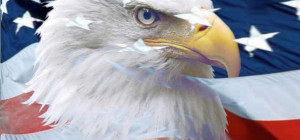 In the State of Oregon, you are required to file an Oregon Traffic Accident and Insurance Report with the Department of Motor Vehicles (DMV). This form must be filed within three days if your accident meets certain criteria. According to the DMV this criteria includes if damage to the vehicle you were driving is over $1,500, if damage to any involved vehicle is over $1,500 and a vehicle is towed from the scene, if there is non-vehicle property damage that reaches above $1,500 or if injury or a death results from the incident. Of course if there is an injury involved, one should contact an Oregon personal injury attorney as quickly as possible.
In the State of Oregon, you are required to file an Oregon Traffic Accident and Insurance Report with the Department of Motor Vehicles (DMV). This form must be filed within three days if your accident meets certain criteria. According to the DMV this criteria includes if damage to the vehicle you were driving is over $1,500, if damage to any involved vehicle is over $1,500 and a vehicle is towed from the scene, if there is non-vehicle property damage that reaches above $1,500 or if injury or a death results from the incident. Of course if there is an injury involved, one should contact an Oregon personal injury attorney as quickly as possible.
One of the reasons to contact an attorney promptly after incurring an Oregon personal injury is that they can help you take the appropriate steps in the proper order. An experienced attorney can also better help determine the proper parties to target in a personal injury claim. Attorneys like those at Nelson, MacNeil, Rayfield Trial Attorneys know to look beyond the surface for those who may share in the responsibility of a claim.
Looking Beyond Just the Driver
On the surface it may appear the driver of another vehicle is the responsible party in an accident. Let's look at an example however, of a personal injury case that involves a commercial truck, and how an experienced attorney may help.
In our hypothetical case, a truck moves through a red light, striking a passenger vehicle, injuring the car's driver. The truck driver is cited and it would seem to be a clear-cut case. The driver is responsible.
An attorney may discover however, that the trucking company the driver worked for didn't properly follow-through on monitoring the driver's work hours. The truck driver may have been over-worked and been driving without enough rest. The trucking company may also use improper incentives that encourage over-extending drivers. They may not have properly maintained the vehicle. Perhaps the brakes or tires were worn. If the truck is mechanically maintained by a third party, they may have responsibility. Was the accident partly due to failed brakes or tires? Who is the manufacturer of these parts?
What about the load the truck was carrying? Who loaded the truck and was it loaded properly. Did the load perhaps shift, adding to the problem? Was the truck carrying too much weight to begin with?
What about the traffic light itself? Is it timed to be consistent with other traffic lights in the community? Is this particular intersection prone to accidents? Have steps been taken to make the intersection safer?
In this one example, targeting the responsible party may include not only the driver and his insurance company but the trucking company, repair service, parts manufacturer, shipper, and even the city where the accident occurred. Other responsible parties may include a leasing company that leased the truck or trailer, or even the vehicle manufacturer.
In the case of trucking companies, they have been become very adept at distancing themselves from liability in accidents. It takes an experienced attorney to dig through the paperwork and to perform the due diligence necessary to build a successful case. It also takes that same dedication to locate any and all parties who may bear responsibility.
The American Bar Association notes that every tort claim has two fundamental issues. They are liability and damages. While some attorneys focus on the amount of damages they may be able to get awarded, attributing liability successfully is key in winning any case. An experienced personal injury lawyer can help solidly identify those parties.





